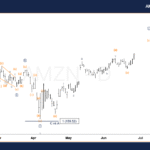In a year marked by renewed volatility and shifting economic expectations, even the most familiar investment principles are worth revisiting. Behavioral finance concepts like loss aversion and goal framing may seem basic, but they remain essential tools for understanding how clients will actually behave, especially under stress.
Financial advisors recognize that “know your client” is more than a regulatory requirement. It means understanding not just time horizons and return targets, but the emotional narratives behind the numbers. Two clients might share the same objective — say, retiring at 60 — but respond very differently when markets turn. One sees opportunity, the other sees risk. The difference lies in why they’re investing.
That “why” matters. Investment objectives are often treated as planning inputs, but they also reveal deeper psychological patterns: how much risk a client is willing to take, how they interpret uncertainty, and what emotional outcomes they hope to avoid. Tapping into that context can help advisors deliver better guidance, especially when market conditions test client discipline.
This is where a powerful distinction comes into play: the difference between Builders and Avoiders.
Builder vs. Avoiders
Most client goals fall into one of two broad categories, each reflecting a distinct emotional orientation and behavioral tendency:
Builders (Aspirational, Goal-Oriented)
These clients are focused on opportunity and growth.
Common goals include:
- “I want to retire early.”
- “I want to build a passive income stream.”
- “I want to grow capital so I have freedom in how I work.”
Typical behavioral traits of builders:
- Stay invested during market volatility
- Reframe downturns as buying opportunities
- View risk as necessary to achieve goals
Avoiders (Fear-Driven, Loss-Oriented)
These clients are focused on minimizing risk or avoiding worst-case scenarios.
Common goals include:
- “I don’t want to run out of money in retirement.”
- “I want to avoid being caught off guard.”
- “I don’t want to depend on the state pension.”
Typical behavioral traits:
- Prone to panic selling
- Often invest too conservatively
- May reduce contributions after early success
Reframing Goals for Long-term Discipline
Advisors can go beyond surface-level planning by exploring the emotional context behind a client’s objectives. When goals are rooted in fear, even minor setbacks can trigger outsized stress responses. But when goals are reframed around positive aspirations, clients are more likely to stay the course.
For example, shifting the goal from “I don’t want to outlive my money” to “I want to live independently and with dignity” helps move the focus from avoidance to aspiration, supporting more confident and disciplined investing.

How Advisors Can Apply This Insight
Here are three questions to ask when evaluating client goals:
- Why does this goal matter to the client?
- Is the motivation based in fear or aspiration?
- How might this influence decisions during periods of stress?
By identifying a client’s emotional orientation, advisors can:
- Provide more personalized risk guidance.
- Strengthen communication and trust.
- Encourage more consistent investing behavior.
The Bottom Line
Investment goals are more than technical inputs — they’re emotional signposts. Whether shaped by fear or aspiration, these goals influence how clients experience risk, respond to market stress, and define success. For advisors, the real opportunity lies in understanding not just what clients want, but why.
Consider two clients: Sarah, a 45-year-old executive focused on financial independence, and Tom, a 52-year-old contractor worried about running out of money. They both describe a moderate risk tolerance and choose similar portfolios. But when markets fall, Sarah stays the course, while Tom wants to pull out. The difference isn’t their asset allocation. It’s their motivation. One is building toward a goal; the other is trying to avoid a fear.
By identifying a client as a Builder or an Avoider and adjusting your communication and planning approach accordingly, you can help them navigate uncertainty with greater clarity and confidence. Because successful investing isn’t just about numbers. It’s about aligning strategy with the stories people believe about their future.






